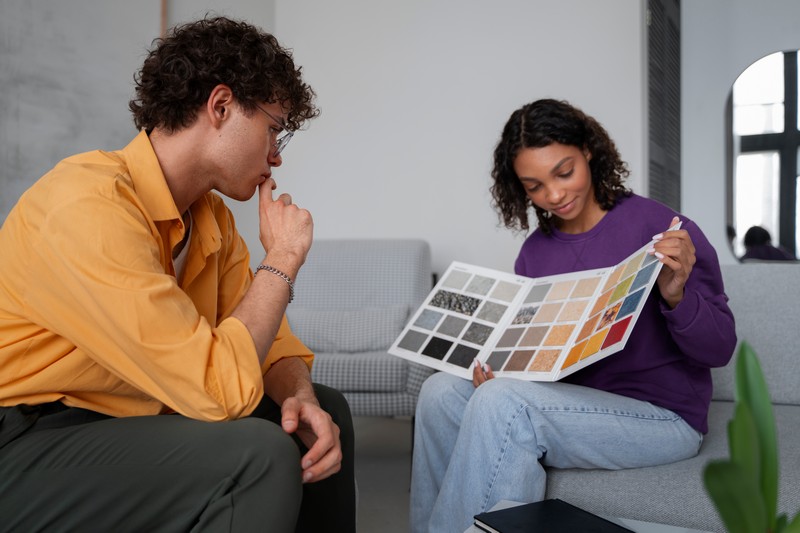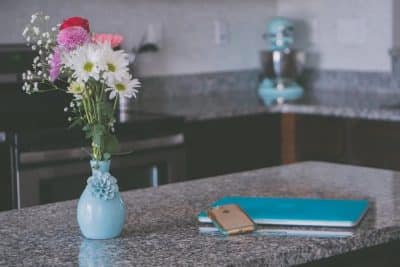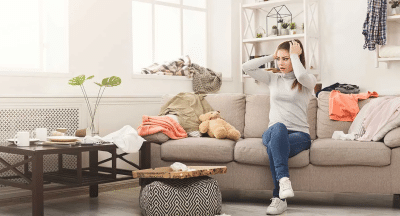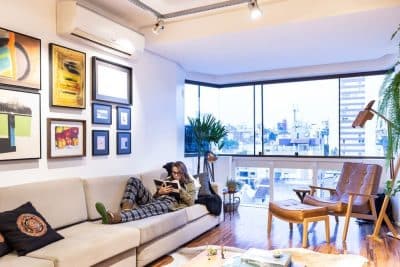
Color psychology in interior design is the study of how colors influence emotions and behavior within a space. The right choice of colors can transform a room, affecting its aesthetic appeal and the mood of its inhabitants. In this article, we’ll explore how different colors can impact your emotions and the overall ambiance of your home, helping you create spaces that evoke the feelings you desire.
The Impact of Colors on Mood
Each color group affects the space and emotions differently. Let’s explore how these colors can transform your home and influence how you feel in each room.
Warm Colors (Red, Orange, Yellow)
Warm colors like red, orange, and yellow are known for their ability to create energy and excitement. These colors evoke warmth, making a room feel cozy and inviting. They can also stimulate conversation and promote activity.
These colors are ideal for spaces such as living rooms and kitchens, where socializing and interaction occur frequently. Red, in particular, can increase energy levels, while orange and yellow can add a cheerful, welcoming touch to any room.
Cool Colors (Blue, Green, Purple)
Cool colors, such as blue, green, and purple, have a calming and relaxing effect. These colors are often associated with tranquility and peace, making them perfect for spaces intended for rest and relaxation.
Bedrooms, bathrooms, and offices are great places for cool colors, as they help create a serene environment conducive to unwinding or focusing. Blue can reduce stress, green promotes balance, and purple adds a touch of sophistication.
Neutral Colors (White, Beige, Gray)
Neutral colors like white, beige, and gray offer balance and sophistication. They are versatile and can create a calming atmosphere, making them suitable for almost any room. Neutral tones serve as a perfect backdrop for accent colors.
They allow vibrant hues to stand out without overwhelming the space. These colors work well in living rooms, hallways, or even offices, offering flexibility while maintaining a refined and elegant vibe. Check out this article If you’re looking for more tips on incorporating neutral tones effectively in your design.
Colors That Affect Space Perception
Light colors, such as whites, pastels, and soft neutrals, are great for making small or dark rooms feel larger and brighter. These shades reflect more light, creating the illusion of space and airiness. In smaller or windowless rooms, using light colors can help open up the area, making it feel more expansive and welcoming.
On the other hand, dark colors like deep blues, charcoals, and browns have the ability to make a room feel more intimate and grounded. While they can make spaces feel cozy and inviting, they are best suited for larger rooms, where they won’t overwhelm the space.
Practical Tips for Using Color in Your Home
Here are some practical tips to guide you through the process of choosing the perfect colors for your space.
Create a Balanced Palette
For a harmonious look, mix warm, cool, and neutral colors to create balance in your space. A combination of these shades can evoke different moods while ensuring your room feels cohesive.
Use Accent Colors
Instead of overwhelming a room with bold colors, add accent tones through accessories like pillows, rugs, or artwork. These smaller touches can bring vibrancy without dominating the space.
Consider Room Function
When choosing colors, think about the room’s purpose. Use restful tones like soft blues or greens for bedrooms to promote relaxation, while vibrant hues such as red or orange work well in social areas like living rooms or kitchens, energizing the atmosphere.
Keep Your Space Clutter-Free During Your Renovation
As you redesign your space, the renovation process can often generate significant waste. Proper debris management is crucial, whether you’re repainting walls or replacing furniture. Dumpster rentals offer a practical solution to dispose of unwanted materials. This helps keep your home organized and allows you to focus on your design transformation.
Endnote
Color plays a significant role in shaping the mood and ambiance of any room. By thoughtfully selecting colors based on their psychological effects, you can create spaces that enhance functionality and comfort. Keep these tips in mind as you experiment with color in your home to achieve the perfect balance.








